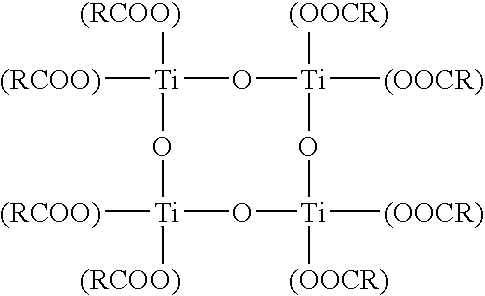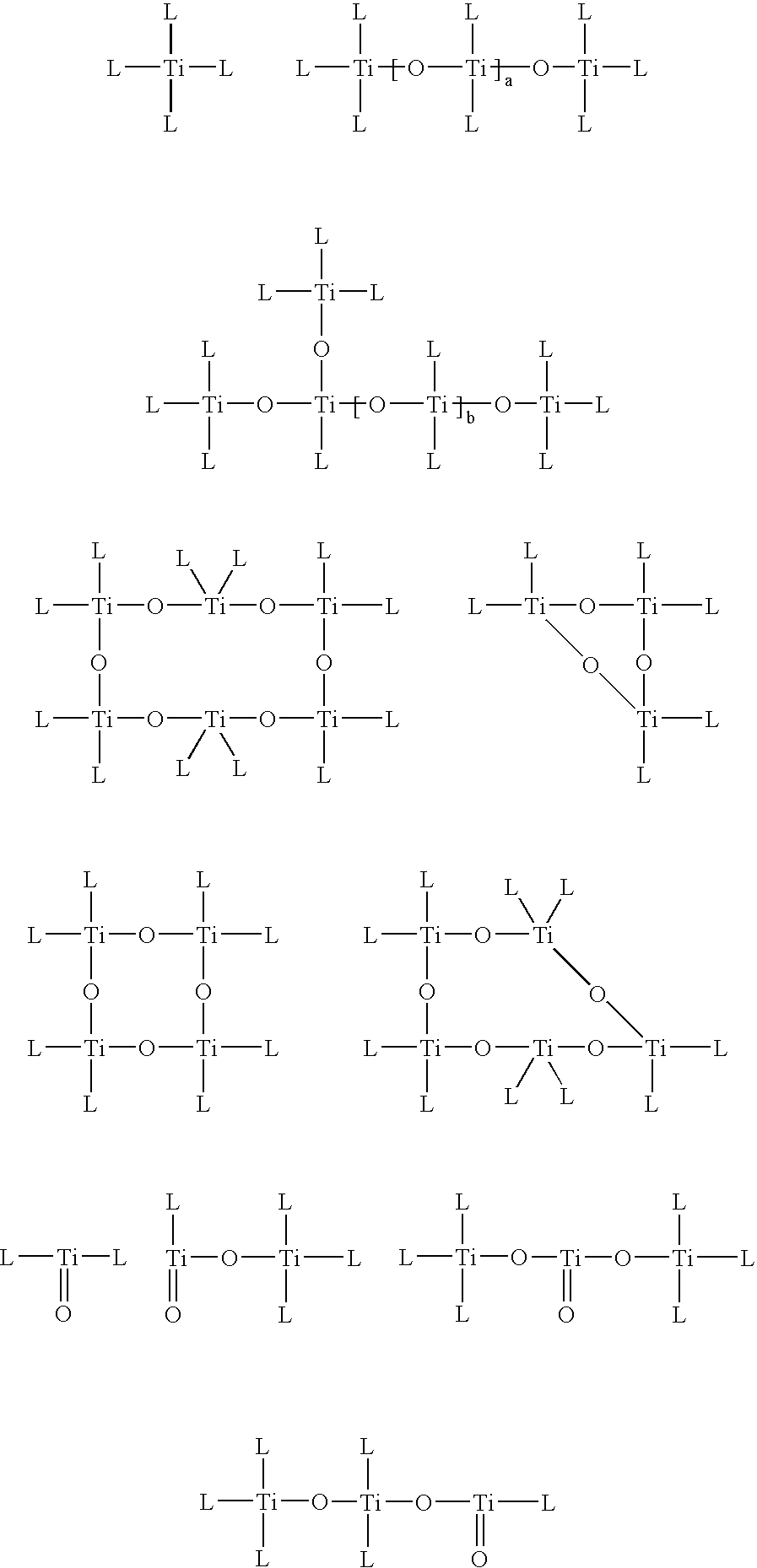Coating formulation and process for the production of titanate-based ceramic film with the coating formulation
a technology of coating formulation and titanate, which is applied in the direction of liquid/solution decomposition chemical coating, sustainable manufacturing/processing, final product manufacturing, etc., can solve the problems of titanium compound raw material disclosure, deteriorated film quality, and limited thickness of single coating step film available, etc., to achieve good solubility in organic solvents
- Summary
- Abstract
- Description
- Claims
- Application Information
AI Technical Summary
Benefits of technology
Problems solved by technology
Method used
Image
Examples
examples
[0060] The present invention will hereinafter be described in further detail on the basis of Production Example, Examples and Comparative Examples. It is, however, to be noted that the present invention is by no means limited by the following Examples.
production example
Production of 2-ethylhexanoic Acid-Titanium Compound
[0061] Under a dry argon gas atmosphere, tetra(isopropoxy)titanium (0.5 mole) and dry toluene (250 mL) were charged into a reaction flask in a heating bath, and 2-ethylhexanoic acid (2 moles) was added, followed by refluxing for 4 hours. After toluene and low-boiling substances were distilled off from the reaction system at a heating bath temperature of 135° C., the interior of the system was depressurized from 3 to 1 torr to conduct concentration so that a 2-ethylhexanoic acid-titanium compound (component (A)) was obtained as a yellow viscous liquid (279 g) On the thus-obtained yellow liquid, the following measurements were performed.
(1) Elemental analysis (analysis of titanium atom content: quantitation as titanium dioxide by the ashing method; carbon and hydrogen contents: CHN elemental analysis)
[0062] Ti: 12.1 wt. %, C: 54.9 wt. %, H, 8.5 wt. %
examples 8-12
[0067] To each of the fine particle dispersion b-1 and a dispersion b-3 of fine particles in 1-butanol, said dispersion b-3 containing TiBa0.6Sr0.4O3 fine particles of 50 nm average particle size at 0.8 mol / kg (the component (B)), the 2-ethylhexanoic acid-titanium compound (component (A)) obtained above in Production Example and barium 2-ethylhexanoate and strontium 2-ethylhexanoate (component (D)) were added at a molar ratio of 1:0.6:0.4 to give the titanium atom contents shown in Table 3, respectively. Coating formulations No. 4 and No. 5 according to the present invention were obtained accordingly.
[0068] Those coating formulations (1.5 mL) were coated onto Si / SiO2 / Ti / Pt multilayer substrates of 2 cm×2 cm by bar coater (rod: 12 μm gauge) or spin coating (500 rpm, 10 seconds). Subsequently, there were performed a drying step at 120° C. for 10 minutes, a calcining step at 400° C. for 15 minutes and a firing step at 700° C. for 30 minutes to form barium strontium titanate films on t...
PUM
| Property | Measurement | Unit |
|---|---|---|
| Temperature | aaaaa | aaaaa |
| Temperature | aaaaa | aaaaa |
| Dimensionless property | aaaaa | aaaaa |
Abstract
Description
Claims
Application Information
 Login to View More
Login to View More - R&D
- Intellectual Property
- Life Sciences
- Materials
- Tech Scout
- Unparalleled Data Quality
- Higher Quality Content
- 60% Fewer Hallucinations
Browse by: Latest US Patents, China's latest patents, Technical Efficacy Thesaurus, Application Domain, Technology Topic, Popular Technical Reports.
© 2025 PatSnap. All rights reserved.Legal|Privacy policy|Modern Slavery Act Transparency Statement|Sitemap|About US| Contact US: help@patsnap.com


